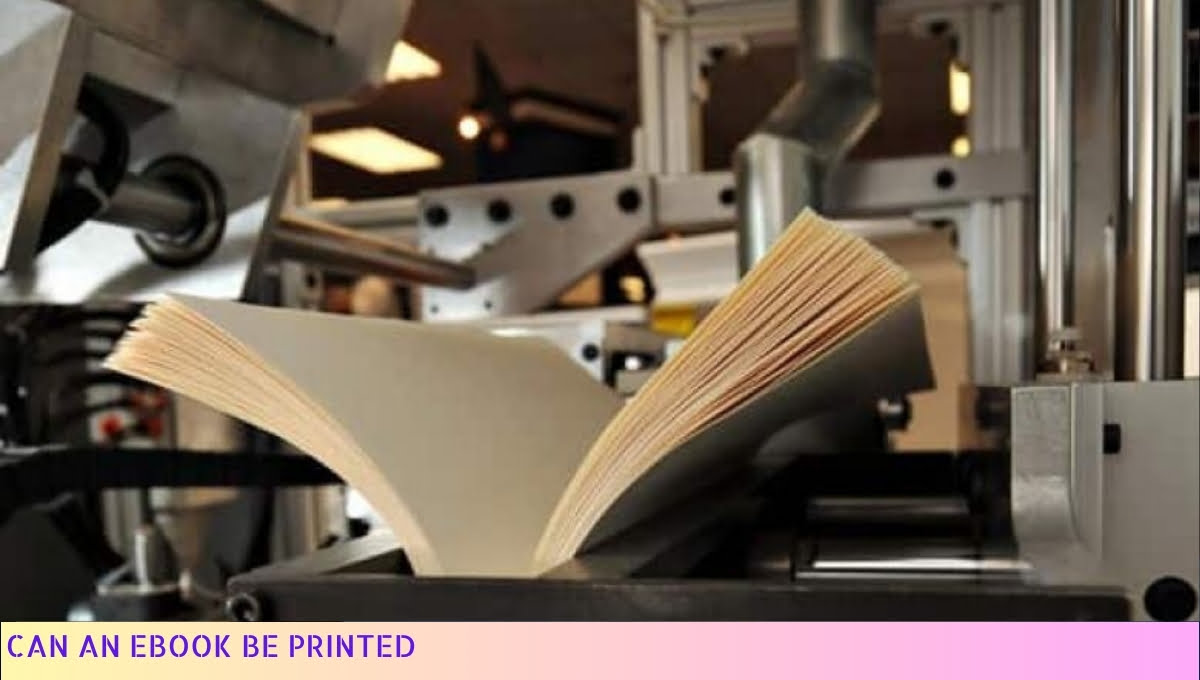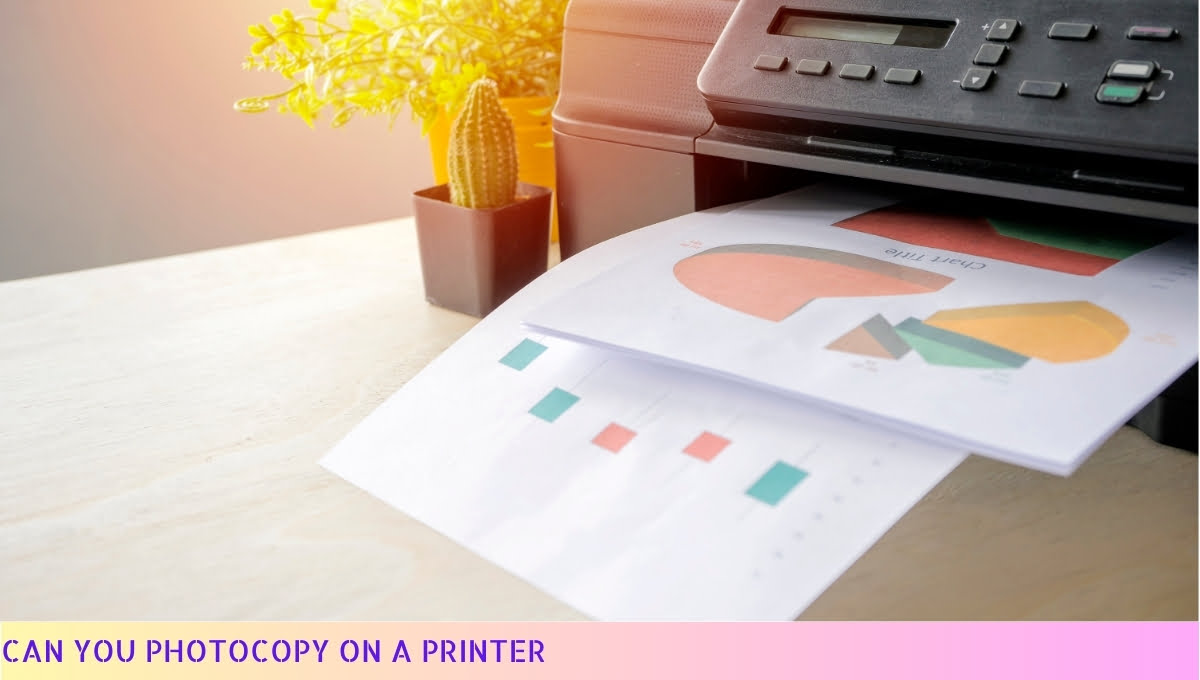Yes, an ebook can be printed.
Although ebooks are primarily designed to be read digitally, many ebook formats allow for printing, giving readers the option to have a physical copy of the book.
Printing an ebook can be done by connecting an ebook reader to a printer or by converting the ebook file to a printable format, such as PDF, and then printing it using a computer or a printing service.
1. Can an eBook be Printed?

So, you’re wondering if you can print an eBook, huh? Well, the short answer is yes, you can! Now, let me break it down for you.
2. The Process of Printing an eBook

Alrighty, folks, let’s dive right into the nitty-gritty of printing an eBook.
If you’ve ever wondered whether you can turn those digital pages into something tangible, well, wonder no more! I’m here to spill the beans on how it’s done.
Now, before we get into the details, it’s important to note that not all eBooks can be printed. Some publishers slap on restrictions, keeping those words trapped within the virtual realm.
But fear not, my friends, because many eBooks out there can indeed be set free on paper.
So, how does one go about transforming an eBook into a physical form? It’s a pretty straightforward process, my friends. Here’s what you need to do:
- Choose the right format: Make sure your eBook is in a format that allows for printing. The most common formats that support this are PDF and EPUB.
- Convert the eBook (if needed): If your eBook isn’t in a printable format, you’ll need to convert it. There are plenty of online tools and software available that can help you with this. Just make sure to choose a reliable one.
- Prepare for printing: Once you have your eBook in a printable format, it’s time to get it ready for the printing press. Check the layout, font size, and any images or graphics to ensure they’ll look good on paper. You may need to make some adjustments here and there to optimize the reading experience.
- Print it out: Now comes the fun part! Fire up your trusty printer and hit that print button. Make sure you have enough ink and paper to handle the job. And don’t forget to choose the right settings for paper size, orientation, and quality.
- Bind it together: Once those freshly printed pages are in your hands, it’s time to give them a proper binding. You can go for a simple staple, spiral binding, or even get fancy with a hardcover. The choice is yours, my friend.
And voila! You’ve successfully printed your eBook, turning those digital words into a tangible piece of literature. Now you can curl up with a cup of joe and enjoy the feeling of flipping through those physical pages.
But hold your horses, my friend, before you go running off to the printer, let’s take a quick peek at the pros and cons of printing an eBook, just to make sure it’s the right choice for you.
3. Pros and Cons of Printing an eBook

Printing an eBook can be a tempting idea, especially if you love the feel of a physical book in your hands.
But before you grab your printer and start churning out pages, let’s take a closer look at the pros and cons of this approach.
1. The Pros
- Tactile Experience: Holding a printed book can evoke a sense of nostalgia and provide a tactile experience that some readers find more enjoyable than reading on a screen.
- Eye Comfort: Reading from a printed page can be easier on the eyes, especially for those who spend a lot of time in front of screens.
- Annotation and Highlighting: With a printed book, you can easily annotate, highlight, and make notes in the margins, giving you a more interactive reading experience.
- Offline Accessibility: Printed books don’t require an internet connection or battery life, allowing you to read anytime and anywhere without technological constraints.
- Sharing: Printed books can be easily shared with friends, family, or even donated to libraries, spreading the joy of reading.
2. The Cons
- Cost: Printing an entire eBook can be expensive, especially if you have a lengthy book or multiple eBooks you want to print.
- Storage Space: Physical books take up physical space. If you have limited storage or frequently move around, a collection of printed books can become cumbersome.
- Environmental Impact: Printing books consumes paper and energy, contributing to deforestation and carbon emissions. For eco-conscious readers, this may be a concern.
- Updates and Revisions: eBooks can be easily updated and revised by authors, ensuring you have the latest version. With printed books, you may miss out on these updates unless you purchase a new copy.
- Portability: Carrying around a stack of printed books can be cumbersome compared to the lightweight convenience of an eReader or smartphone.
4. Alternative Options for Reading eBooks

When it comes to reading eBooks, there are a variety of alternative options available that cater to different preferences and needs.
Whether you’re a tech-savvy individual or someone who prefers the traditional feel of a physical book, there’s something for everyone.
Let’s explore some of these options:
1. E-Reader Devices
If you’re an avid eBook reader, investing in an e-reader device can enhance your reading experience.
E-readers, such as the Amazon Kindle or Barnes & Noble Nook, are designed specifically for digital books.
They offer features like adjustable font sizes, built-in dictionaries, and long battery life. With an e-reader, you can carry an entire library in the palm of your hand, making it convenient for travel or commuting.
2. Tablets and Smartphones
Tablets and smartphones have become increasingly popular for reading eBooks. With their vibrant screens and versatile functionalities, these devices allow you to download e-reading apps like Kindle, Apple Books, or Google Play Books.
You can customize your reading experience by adjusting the font, background color, and brightness.
Plus, the convenience of having your eBook library on a device you already use daily is a major advantage.
3. Computers and Laptops
If you prefer reading on a larger screen or want to take advantage of additional features, reading eBooks on your computer or laptop is a viable option.
Many eBook platforms offer web-based readers or downloadable software that allows you to access your digital library.
You can easily switch between devices and synchronize your progress, so you never lose your place in a book.
4. Audiobooks
For those who enjoy multitasking or have visual impairments, audiobooks provide a fantastic alternative.
With the rise of platforms like Audible and Librivox, you can listen to professionally narrated books on your phone, tablet, or computer.
Audiobooks allow you to enjoy literature while driving, exercising, or simply relaxing with your eyes closed.
They bring stories to life through the power of voice acting and sound effects.
5. Braille and Large Print
Accessibility is important, and for individuals with visual impairments, braille and large print books are essential.
Many eBooks are available in braille formats, allowing visually impaired readers to access a vast collection of literature.
Additionally, large print eBooks cater to readers who prefer larger text sizes for easier reading.
These options ensure that everyone can enjoy the pleasure of reading, regardless of their visual abilities.
6. Public Libraries
Don’t forget about your local public library! Many libraries offer digital lending services, allowing you to borrow eBooks for free.
By utilizing library apps or websites, you can access a wide range of titles and genres without spending a dime.
This option not only saves you money but also supports your local community.
7. Online Reading Platforms
If you’re not keen on investing in an e-reader or downloading multiple apps, online reading platforms provide a convenient solution.
Websites like Project Gutenberg and Open Library offer a vast collection of free eBooks that you can read directly in your web browser.
These platforms are perfect for casual readers or those who want to explore classic literature.
As you can see, there are plenty of alternative options for reading eBooks, each catering to different preferences and needs.
Whether you prefer the portability of an e-reader, the versatility of a tablet, or the convenience of your computer, the choice is yours.
So, grab your favorite device, find a cozy spot, and immerse yourself in the wonderful world of digital literature!
Can an eBook be Printed? – Frequently Asked Questions (FAQ)
1. Can I print an eBook?
Yes, in most cases, eBooks can be printed. However, the ability to print depends on the publisher’s settings and restrictions.
2. How can I print an eBook?
To print an eBook, you can typically use your computer’s print function. Connect your printer, open the eBook file, and select the print option from the menu or using the keyboard shortcut (Ctrl+P on Windows, Command+P on Mac).
3. Are there any limitations to printing an eBook?
Some eBooks may have restrictions on printing to prevent unauthorized distribution. These restrictions can include limitations on the number of pages you can print or disabling the print feature altogether.
4. Can I print an eBook from my eReader device?
Yes, if your eReader device supports printing, you can usually print eBooks directly from the device. Refer to your eReader’s user manual or settings to find the printing option.
5. Can I print an eBook on any type of paper?
Yes, you can print eBooks on any type of paper that is compatible with your printer. It is recommended to use standard printer paper or any paper suitable for the type of content you are printing.
6. Will the formatting of the eBook remain intact when printed?
In most cases, the formatting of the eBook will remain intact when printed. However, depending on the eBook file format and your printer settings, there might be slight variations in formatting, such as page breaks or font sizes.
7. Can I print specific pages or chapters of an eBook?
Yes, you can usually select specific pages or chapters to print. When printing, check the print settings to choose the desired range of pages or chapters.
8. Are there any copyright restrictions on printing eBooks?
Some eBooks may be protected by copyright, which means you may be limited in how much you can print or distribute.
It is always recommended to respect the copyright laws and any usage restrictions mentioned by the publisher.
9. Can I print an eBook multiple times?
Generally, you can print an eBook multiple times if there are no restrictions set by the publisher.
However, it’s essential to review the terms of use or licensing agreement associated with the eBook to ensure compliance.
10. Can I print an eBook purchased from an online store?
Yes, eBooks purchased from online stores can usually be printed, provided there are no specific restrictions set by the publisher or seller.
Always check the terms and conditions associated with the eBook before attempting to print.
Wrapping Up
Yes, an ebook can be printed. While ebooks are primarily designed for digital reading on devices like e-readers, tablets, and smartphones, they can also be printed on paper.
Many ebook formats, such as PDF and EPUB, allow users to print the content.
However, it’s important to note that the formatting and layout may not be optimized for print, resulting in potential issues like page breaks and font sizes.
Additionally, some ebooks may have restrictions on printing due to copyright protection.
Nevertheless, with the right formatting and permissions, printing an ebook is indeed possible.











